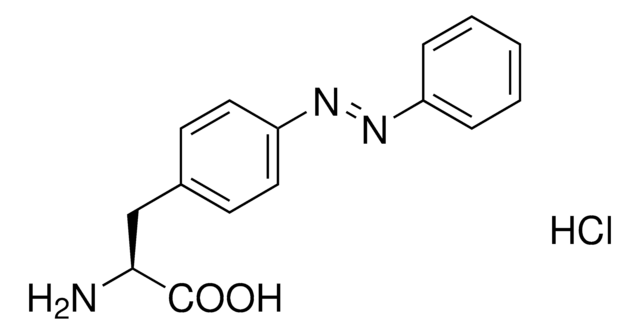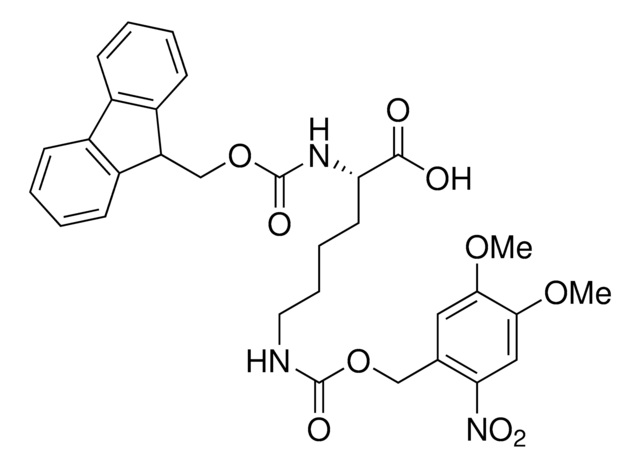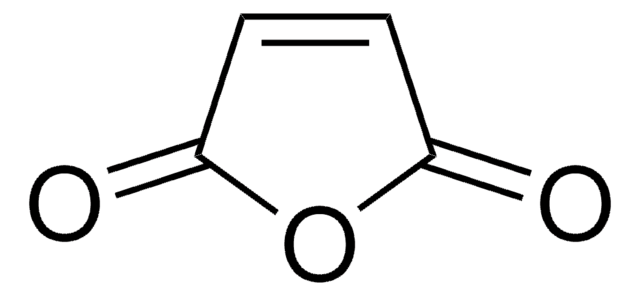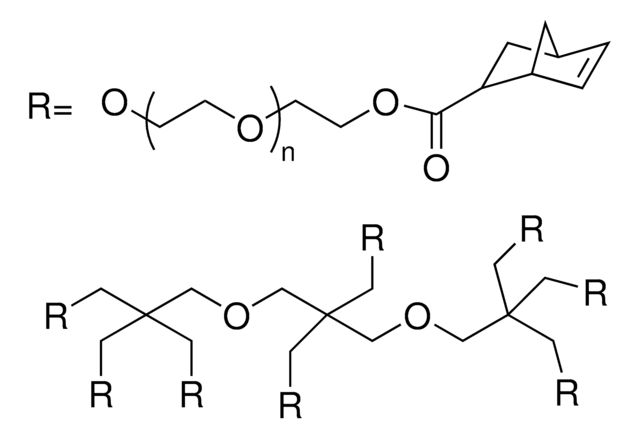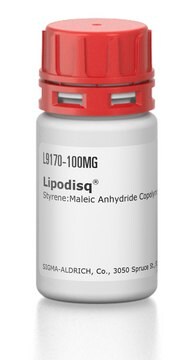おすすめの製品
品質水準
アッセイ
≥95%
フォーム
powder
保管温度
−20°C
SMILES記法
[N+](=O)([O-])c1cc2c(cc1C(OC(=O)NCCCC[C@H](N)C(=O)O)C)OCO2
InChI
1S/C16H21N3O8/c1-9(27-16(22)18-5-3-2-4-11(17)15(20)21)10-6-13-14(26-8-25-13)7-12(10)19(23)24/h6-7,9,11H,2-5,8,17H2,1H3,(H,18,22)(H,20,21)/t9?,11-/m0/s1
InChI Key
ZXXFKVZFDGUTQW-UMJHXOGRSA-N
アプリケーション
Methyl-o-nitropiperonyllysine (mNPK) trifluoroacetic acid is a photo-responsive unnatural amino acid (UAA) for spatiotemporal control of biological molecules or processes as reported by Kneuttinger et al. Irradiation with UV light decages the Lys amino acid, freeing the residue or protein for biological activity. Tools such as mNPK will find wide utility in light regulation of activity, allostery, and enzyme pathways.
Product can be used with our line of photoreactors: Including Penn PhD (Z744035) & SynLED 2.0 (Z744080)
Product can be used with our line of photoreactors: Including Penn PhD (Z744035) & SynLED 2.0 (Z744080)
その他情報
Light Regulation of Enzyme Allostery through Photoresponsive Unnatural Amino Acids
Precise Photoremovable Perturbation of a Virus-Host Interaction
Genetic code expansion in the mouse brain
Genetically encoded optical activation of DNA recombination in human cells
Bioorthogonal Chemical Activation of Kinases in Living Systems
Precise Photoremovable Perturbation of a Virus-Host Interaction
Genetic code expansion in the mouse brain
Genetically encoded optical activation of DNA recombination in human cells
Bioorthogonal Chemical Activation of Kinases in Living Systems
保管分類コード
11 - Combustible Solids
WGK
WGK 3
引火点(°F)
Not applicable
引火点(℃)
Not applicable
適用法令
試験研究用途を考慮した関連法令を主に挙げております。化学物質以外については、一部の情報のみ提供しています。 製品を安全かつ合法的に使用することは、使用者の義務です。最新情報により修正される場合があります。WEBの反映には時間を要することがあるため、適宜SDSをご参照ください。
Jan Code
915793-VAR:
915793-BULK:
915793-100MG:
最新バージョンのいずれかを選択してください:
Gong Zhang et al.
ACS central science, 2(5), 325-331 (2016-06-10)
Selective manipulation of protein kinases under living conditions is highly desirable yet extremely challenging, particularly in a gain-of-function fashion. Here we employ our recently developed bioorthogonal cleavage reaction as a general strategy for intracellular activation of individual kinases. Site-specific incorporation
Sarah B Erickson et al.
Angewandte Chemie (International ed. in English), 56(15), 4234-4237 (2017-03-16)
Viruses utilize distinct binding interactions with a variety of host factors to gain entry into host cells. A chemical strategy is described to precisely perturb a specific molecular interaction between adeno-associated virus and its host cell, which can be rapidly
Hanna Engelke et al.
ACS synthetic biology, 3(10), 731-736 (2014-06-17)
Controlled manipulation of proteins and their function is important in almost all biological disciplines. Here, we demonstrate control of protein activity with light. We present two different applications-light-triggered transcription and light-triggered protease cleavage-both based on the same concept of protein
Arnaud Gautier et al.
Journal of the American Chemical Society, 133(7), 2124-2127 (2011-01-29)
We report a general strategy for creating protein kinases in mammalian cells that are poised for very rapid activation by light. By photoactivating a caged version of MEK1, we demonstrate the specific, rapid, and receptor independent activation of an artificial
Olivia S Walker et al.
Journal of the American Chemical Society, 138(3), 718-721 (2016-01-14)
Isocitrate dehydrogenase is mutated at a key active site arginine residue (Arg172 in IDH2) in many cancers, leading to the synthesis of the oncometabolite (R)-2-hydroxyglutarate (2HG). To investigate the early events following acquisition of this mutation in mammalian cells we
ライフサイエンス、有機合成、材料科学、クロマトグラフィー、分析など、あらゆる分野の研究に経験のあるメンバーがおります。.
製品に関するお問い合わせはこちら(テクニカルサービス)